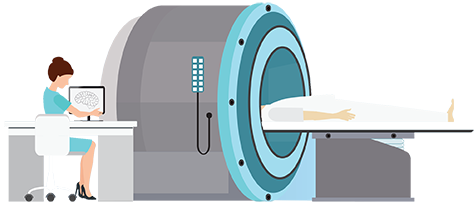

There are many avenues to becoming a trained X-ray technician. However, the most common is to complete either an X-Ray Certificate Program or an associate degree. It is not necessary to complete a bachelor’s degree in order to become an x-ray technician unless you are looking to get into a supervisory role. Most programs are similar, so take a look below at a sample set of curriculum and training you might receive during your X-ray training program.
Although much of your training will happen on-the-job, the following classes are what you will typically expect to take during an X-ray technician training program:
Most X-Ray Tech Training programs take an academic year to complete. The amount of time it takes depends on whether you are pursuing a certificate or an associates degree. A certificate can be completed in 8 to 12 months and an associates degree in radiology takes two academic years on average. Some schools have highly flexible programs and allow you to stretch your x-ray technician training out further. Some people who work full time may need to complete their training at a slower pace so that their incomes do not get disrupted from their current jobs.
Yes, virtually all X-ray training programs provide ample opportunity to practice taking X-rays on real equipment. Since this is so central to your job as an x-ray technician, the training is often centered around the machine operation and patient positioning. Some programs offer X-ray tech training that includes practice using digital imaging equipment. As we become more entrenched in the digital age, more radiology schools are adding this to their curriculum.
Many X-Ray Tech Training programs are combined with Medical Assisting Training. This can be beneficial for a number of reasons starting with a wider set of skills to work with. Employers like to hire people who have a more comprehensive set of skills so that they can be used to perform multiple tasks with patients. There are; however, some medical imaging facilities where positions are available for those who only perform x-rays during their work day without additional patient tasks that would require Medical Assisting training. Take a look at job postings in your area and find out if the jobs you want to apply for require or prefer that you also have Medical Assisting training in conjunction with x-ray.
Once you have completed your x-ray training, you may need to become licensed in your state, then you can begin applying for x-ray positions. Typically, you will find positions available in physician’s offices, chiropractic offices, outpatient centers, and hospitals. Many X-Ray Technicians work in the field for a year or two, then work towards becoming a Radiologic Technologist, which requires that you pass the ARRT examination. Your first few years on the job are a good time to decide which aspects of medical imaging interests you. You may want to learn more about ultrasound or nuclear medicine.